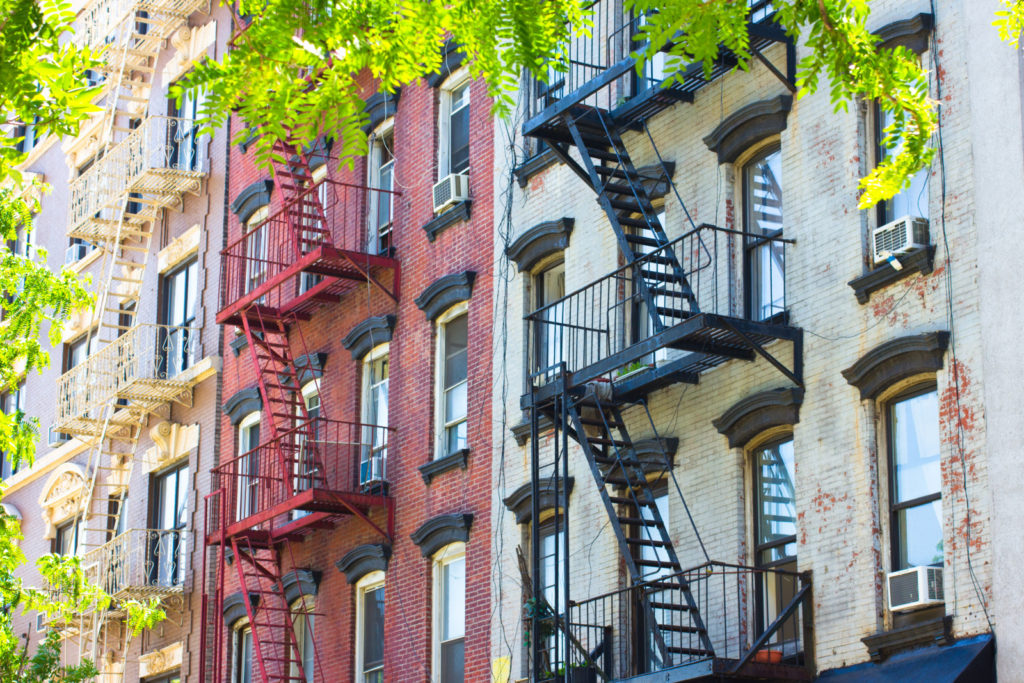Age and Affordability: Why an Affordable Rental Home Is More Often an Older Home, and Why That Matters
Subdued new home construction activity in recent years is pushing up the price and age of those homes that do sell, and contributing to slower depreciation in value among aging homes that otherwise would become more affordable. As a result, those homes that are affordable for lower-income, renter households are increasingly older and potentially a lot more hazardous.
- Living in an older home increases the likelihood of living in unhealthy or unsafe conditions. In almost every metro region, homes that are affordable for low-income households to rent are significantly older than market-rate units, with an average gap of 17 years.
- In 29 of the 100 metros analyzed, the median age of a home likely to be affordable to typical low-income renters was at least twice as old as that of homes more likely to be unattainable.
- Metros that built housing units at a slower rate over the past 25 year feature a significantly larger age gap between affordable and unaffordable homes for low-income renters.
Subdued new home construction activity in recent years is pushing up the price and age of those homes that do sell, and contributing to slower depreciation in value among aging homes that otherwise would become more affordable. As a result, those homes that are affordable for lower-income, renter households are increasingly older and potentially a lot more hazardous.
Empirical studies show that older residential structures are more likely to contribute to injuries and deaths. Other studies have demonstrated significant increases in lead-based paint and other hazards associated with the age of housing. This is especially important when older and cheaper homes are rented by low-income families with less leverage and capital to fight for solutions to their buildings’ problems.
Older homes don’t tell a complete story about quality. Plenty of luxury homes in urban cores are in near-ancient buildings that have been heavily renovated. But in general, old buildings are a useful proxy for lower quality and decreased safety.
Age and Affordability
Zillow analyzed the age of affordable homes in dozens of large markets nationwide. In almost every metro analyzed, homes affordable for low-income households[1] were significantly older than homes more likely to be inaccessible based on their budget.[2] The typical age of affordable homes across the nation’s largest metros is 54 years, significantly older than unaffordable units (37 years). [3] In 29 of the 100 metros analyzed, the median age of a home affordable to typical low-income residents was at least twice as old as that of homes more likely to be unattainable (figure 1).
Importantly, the age gap shrinks among metros that have built housing units at a faster rate over the past 25 years (figure 2). These findings suggest that building more housing units may benefit poorer families, even if they can’t afford the newly built homes, simply by lowering the age gap between affordable and non-affordable units. Perhaps unsurprisingly, more building in general translates into a younger housing stock overall.
This analysis contributes to other empirical research that demonstrates substantial improvement in low-income housing conditions, even if new homes aren’t built directly for the poor. But it’s not always obvious how building housing in general – including luxury housing – benefits low-income renters, because most new housing is priced beyond what low-income households can afford. In the absence of a government subsidy, affordable housing is usually produced through a process called filtering.
In theory it works like this: New buildings often command higher rents and are occupied by wealthier tenants. But as structures age, amenities deteriorate and better-heeled tenants are attracted to the even newer units around town. The value of the older building slowly depreciates to a price that eventually becomes affordable for low-income households. But while filtering is all well and good, it falls apart either when units deteriorate in condition too quickly before becoming affordable, or when older buildings retain their value longer and take too long to become affordable. When this happens, low-income families can be subjected to living in unhealthy structures.
For filtering to be an efficient and ethical method of creating affordable housing, units must become cheaper while remaining new enough to provide safe living conditions. These findings suggest that the balance between deterioration and depreciation can be improved though increased construction. By building more quickly, filtering becomes a safer source of naturally affordable housing.
It’s important to note, however, that this does not mean there is a sufficient amount of affordable housing in any of these metros. Often the fastest-growing metros are the ones struggling the most to build affordable housing. Rather, of the housing that is affordable, cities building faster are providing relatively higher quality homes for low-income residents.
[1] Low-income households are defined as those earning 80 percent or less of the area median household income. An affordable rental has a monthly rental cost that consumes 30 percent or less of that income.
[2] This analysis used home characteristics, including age of home and Zillow’s Rent Zestimates, on all homes in the nation’s largest 100 metropolitan areas by population. This data was coupled with data on median household income and housing unit construction from the U.S. Census Bureau’s American Community Survey.
[3] The typical age of a home is the weighted average of the median home age within each metro.
